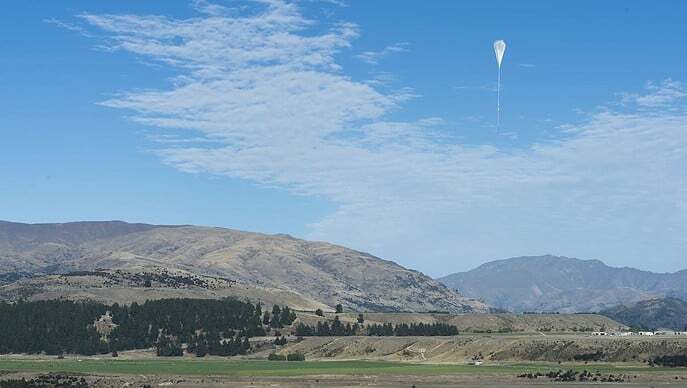1.03.2023
Nicknamed “pumpkins” NASA’s largest balloons set to return to the Southern Hemisphere for launch again this year
NASA’s giant stadium-sized balloons known as pumpkins are expected to return to Wanaka, New Zealand this year after a 2022 launch was aborted.
The super pressure, ultra-long distance balloons are so immense, NASA says a football stadium could fit inside the balloon when fully inflated (the equivalent of 532,379 m3).
The colossal, gourd-like balloons are shaped like a slightly squashed sphere. They are made from polyethylene, a thin plastic film, filled with helium gas. The pumpkins can carry around a tonne of scientific equipment.
NASA’s balloons are designed to float in ‘near-space’ above most of the atmosphere at around 33.5 kilometres. This altitude allows equipment on board, such as telescopes, to make clear observations of space above most of the atmosphere.
The balloon is completely sealed, so that the helium cannot escape, enabling the balloon to fly longer. Although they are designed to fly for up to 100 days, the current record for a NASA pumpkin is 54 days. The balloon flies at an average speed of 24 km/h.
According to NASA, Wanaka is NASA’s dedicated launch site for long duration balloon missions.
In 2022, NASA aborted a sixth attempt to launch the super pressure balloon after an issue with ground support equipment.
“While not the ending we were hoping for, I’m proud of the professionalism of our team in ensuring safe operations today and throughout the campaign,” says NASA Balloon Program Office chief Debbie Fairbrother. Fairbrother says she is looking forward to returning to Wanaka in 2023.
There have been four such missions in the South Island ski town of Wanaka, which has a population of 16,770, in 2015, 2016, 2017 and 2022. A 2015 flight sprung a leak over Australia, and came down in remote south-west Queensland.

NASA is still refining the super pressure balloon technology.
“We are on the cusp of perfecting our SPB balloon technology, which is poised to expand opportunities for all sorts of science and technology missions by providing relatively low-cost, near-space access for long-duration flight times at mid-latitudes,” says Fairbrother.
“For certain types of science, we can achieve the same results on a balloon that could only otherwise be achieved by flying into space on a rocket. Certifying the balloon as a long-duration flight vehicle is key to supporting bigger and more complex science missions in the future.”
Quelle: COSMOS
